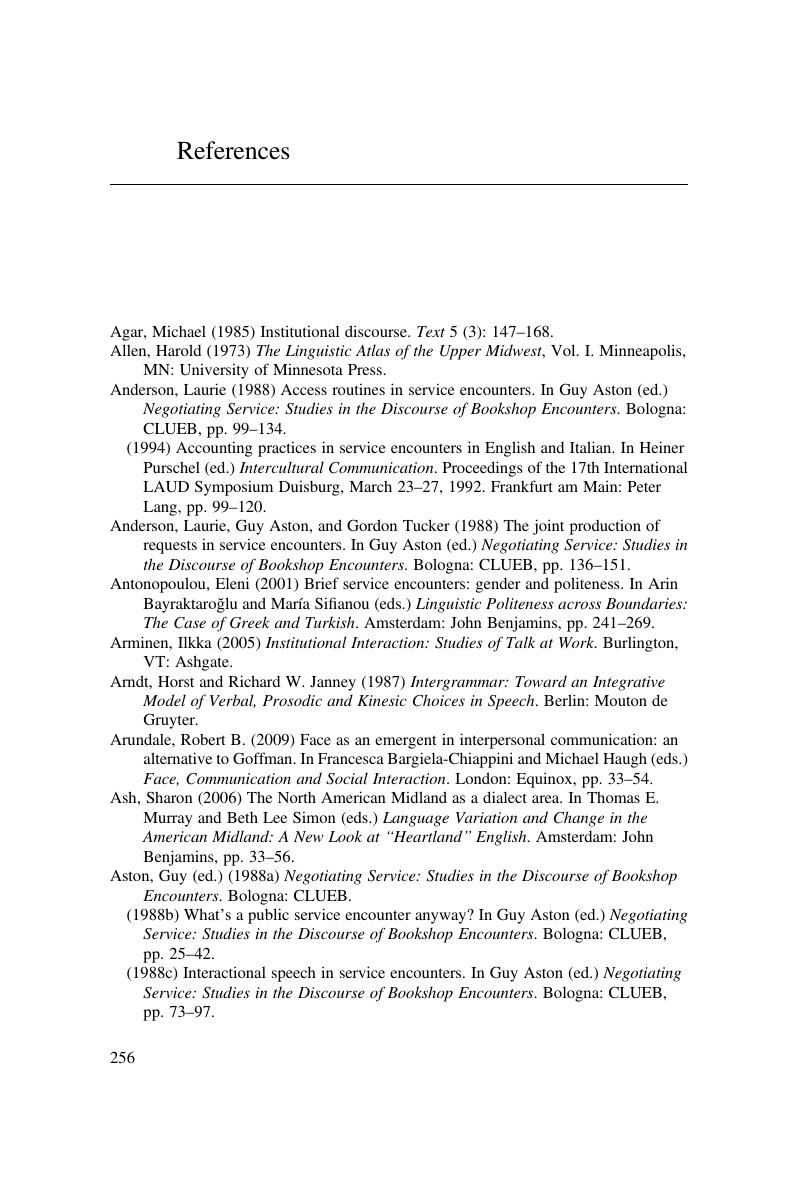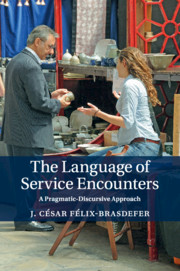Book contents
- The Language of Service Encounters
- The Language of Service Encounters
- Copyright page
- Dedication
- Contents
- Figures
- Tables
- Transcription conventions
- Preface
- Introduction
- 1 Approaches to service encounters: a pragmatic-discursive analysis of social action
- 2 Service encounters in commercial and non-commercial settings
- 3 Cross-cultural service encounters: negotiating service in the United States and Mexico
- 4 Intra-lingual pragmatic variation in service encounters
- 5 Negotiating service in Mexican markets
- 6 Intracultural service encounters at a US visitor information center
- 7 Relational talk and the negotiation of face in service encounters
- 8 Forms of address and politeness in service encounters
- 9 Conclusions
- Book part
- References
- Index
- References
References
Published online by Cambridge University Press: 05 May 2015
- The Language of Service Encounters
- The Language of Service Encounters
- Copyright page
- Dedication
- Contents
- Figures
- Tables
- Transcription conventions
- Preface
- Introduction
- 1 Approaches to service encounters: a pragmatic-discursive analysis of social action
- 2 Service encounters in commercial and non-commercial settings
- 3 Cross-cultural service encounters: negotiating service in the United States and Mexico
- 4 Intra-lingual pragmatic variation in service encounters
- 5 Negotiating service in Mexican markets
- 6 Intracultural service encounters at a US visitor information center
- 7 Relational talk and the negotiation of face in service encounters
- 8 Forms of address and politeness in service encounters
- 9 Conclusions
- Book part
- References
- Index
- References
Summary

Information
- Type
- Chapter
- Information
- The Language of Service EncountersA Pragmatic-Discursive Approach, pp. 256 - 273Publisher: Cambridge University PressPrint publication year: 2015
